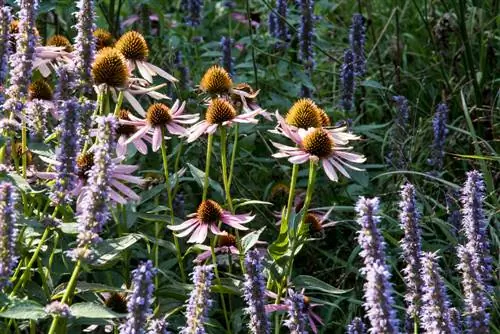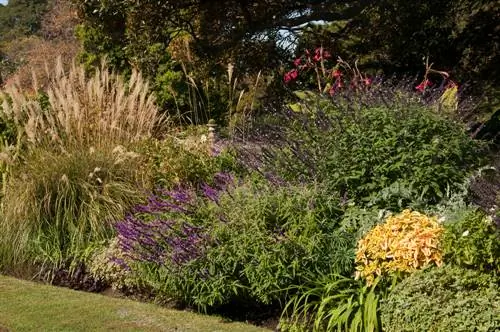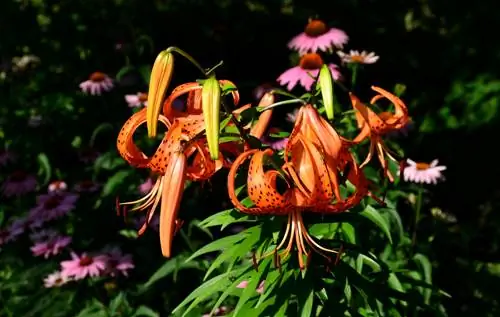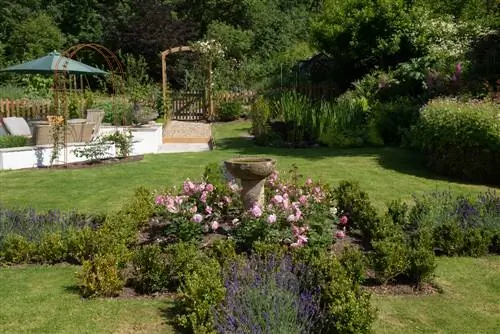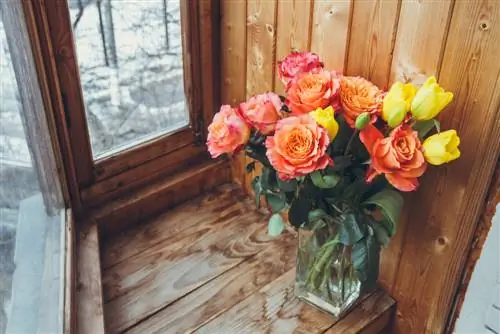- Author admin [email protected].
- Public 2023-12-16 16:46.
- Last modified 2025-01-23 11:22.
The flower umbrellas of Echinacea (also known as purple coneflower) stretch towards the sky on graceful stalks and shine in the most beautiful colors. Echinacea is already very eye-catching on its own, but when combined with other plants it can attract even more attention
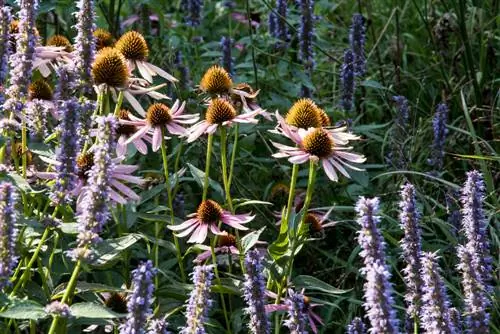
Which plants go well with Echinacea?
Echinacea can be wonderfully combined with plants such as daylily, sweet nettle, ornamental grasses, autumn aster, coneflower, purple loosestrife and monkshood. Pay attention to similar location requirements, harmonious flower colors and a similar height for an appealing overall appearance.
What factors should you consider when combining echinacea?
So that Echinacea can benefit from its interaction with other plants, you should consider the following factors:
- Flower color: pink, red, orange, yellow or white
- Flowering time: July to September (purple coneflower)
- Location requirements: sunny, humus-rich and permeable soil
- Growth height: up to 100 cm
The majority of Echinacea varieties produce flowers in a reddish to pink hue. You should pay attention to the respective flower color when combined with other plants.
If you want to create a real flower dream from echinacea and other flowers, it is important not to ignore the flowering time. Late summer to autumn bloomers are the ideal companion plants for Echinacea.
This sun worshiper should be socialized with others like him. Echinacea therefore does not harmonize with shade-loving plants. Plants that originally come from prairie regions are much more suitable for purple coneflower.
Combine Echinacea in the bed or in the bucket
In the bed, Echinacea is perfect in combination with perennials that reveal their flowers to the world from July/August. The overall picture is particularly spectacular when the companion plants and their flowers reach a similar height. The whole thing then appears like an overflowing sea of flowers. In addition, late-growing grasses are also ideal for combining with the purple coneflower.
You can get wonderful combinations with Echinacea with the following planting partners, for example:
- Thistle
- Scented Nettle
- Ornamental grasses such as quaking grass, riding grass and miscanthus
- Daylily
- Autumn Taster
- Sun Bride
- Loosestrife
- Monkshood
Combine Echinacea with Daylily
The daylilies like it just as sunny as the purple coneflower. They extend their flowers to the same level and can create a fascinating display of color there. Combine white daylilies with pink purple coneflowers and watch these two perform a dance of elegance and playfulness.
Combine echinacea with scented nettle
Scented nettles are the missing counterpart to Echinacea. Since scented nettles produce elongated and upright flower spikes, they immediately catch the eye when planted next to Echinacea. In contrast to scented nettles, Echinacea has flower plates. Overall, there is a wonderful contrast between the flower shapes. At the same time, the flower colors of these two harmonize pleasantly with each other.
Combine Echinacea with quaking grass
The quaking grass is able to cover Echinacea in rather desolate places in the lower area and visually enhance it. It should therefore be planted in front of the purple coneflower. Its similar location requirements also make quaking grass a perfect planting partner.
Combine Echinacea as a bouquet in the vase
As a bouquet in a vase, Echinacea can be impressive not only on its own. Fabulous arrangements develop, especially when combined with other flowers that usher in autumn. For example, a bouquet of pink echinacea with purple globe thistles and borage flowers is absolutely lovely. A noticeable connection develops between the individual flowers.
- Zinnias
- Phlox
- Borage
- Cosmeen
- Globe Thistles
- Autumn Anemones

